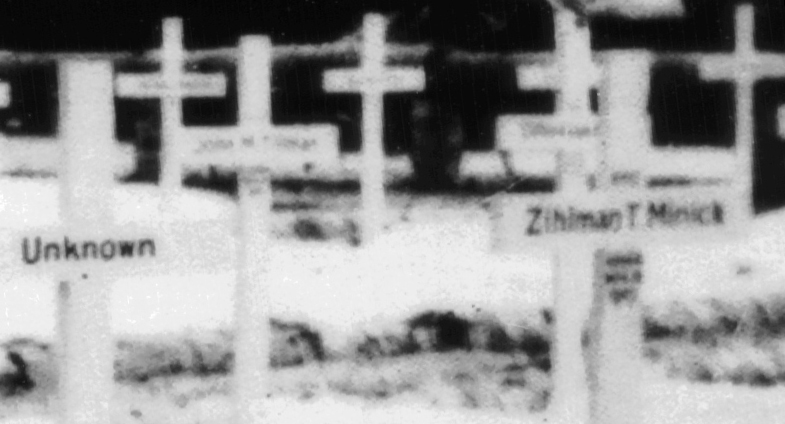
Every Marine who was on Tarawa in late November 1943 remembers the horrible stench. Even pilots reported this smell as they flew near the island thousands of feet in the air. This stench of course was from the rapidly decaying bodies of so many men killed on Betio Island. Therefore one of the most important needs after securing the island was to bury the bodies as quickly as possible to prevent island-wide unsanitary conditions.
|
This burial party is working along the cove on Red Beach 1. Note that two of the Marines are wearing their gasmasks because of the putrid smell in the air. |
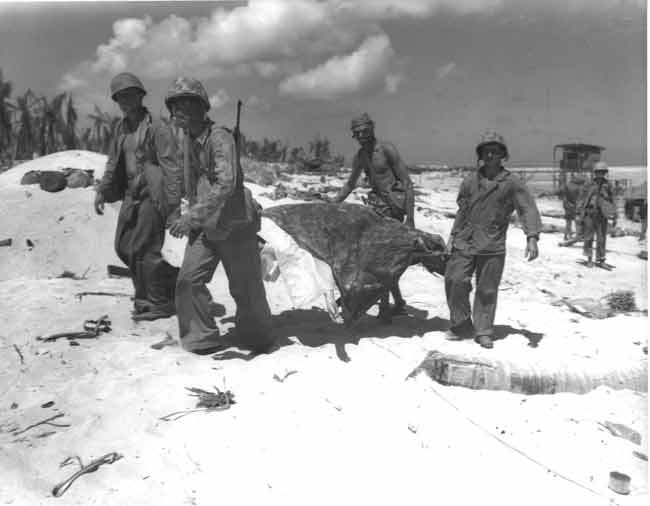 |
For the Japanese dead the process was simple. SeaBee bulldozers scraped a wide trench, unfortunate Marine details collected the bodies, and dumped them into the trench. Finally the SeaBees covered them over with sand. No attempt was made to identify any of the Japanese remains. The only goal was to get them underground as soon as possible.
Much more care was taken to inter the 2nd Marine Division bodies. The men in the burial details only weeks before in New Zealand had enjoyed many good times with their buddies and now had to bury so many of them. With 1,027 Marines and Naval personel killed in action on Betio within the short time of 76 hours many men were buried close to the area where they were killed. Large and small cemetaries were set up all over the island. One researcher determined that over forty single and multiple grave sites were laid out on Tarawa. 1
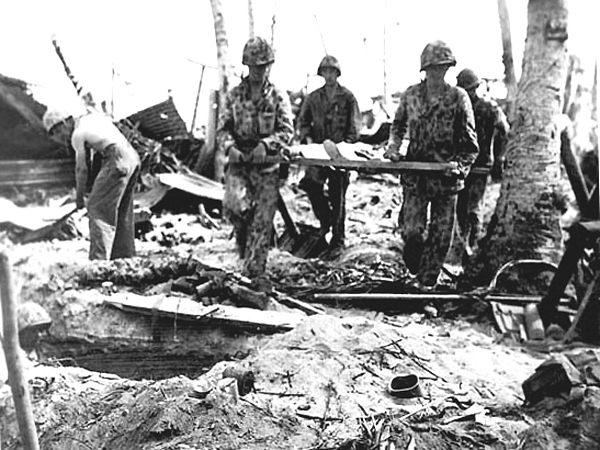
Marines carry a dead comrade on an improvised stretcher.
Unfortunately many mistakes were made in recording the locations and identites of the fallen Marines. For example one corpsman remembered a doctor had removed dogtags from many bodies before they were properly identified. When the runway on Hawkins Field was lengthed a number of graves had to be moved undoubtedlty leading to more confusion. Although there are examples of great care taken to identify the dead. Chaplin Willard did a great service to the 2nd Division when he recorded so many of the names and personal information on the Marines he helped bury.
Shortly following the end of the war when the U.S. Congress mandated that the war dead be returned to U.S. soil, an attempt was made to recover those buried on Tarawa. Bodies were lost and some were not in locations where they were supposed to be. The identity and bodies of some Marines were lost to history.
The following map found in the National Archives by Tarawa researcher Don Allen shows the locations of the graves found on Tarawa shortly after November 1943. The images following the Tarawa map divide the island into three larger sections to allow the grave numbers assigned to be easily seen.
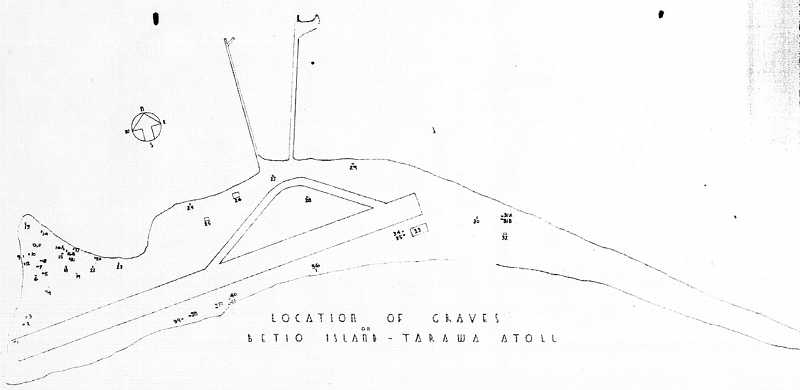
Location of Graves on Betio
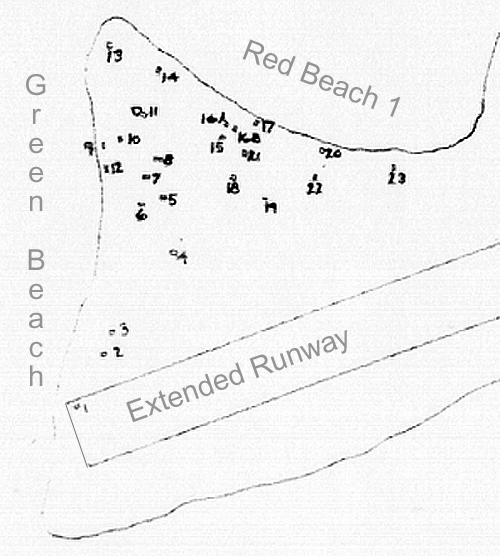
West section.
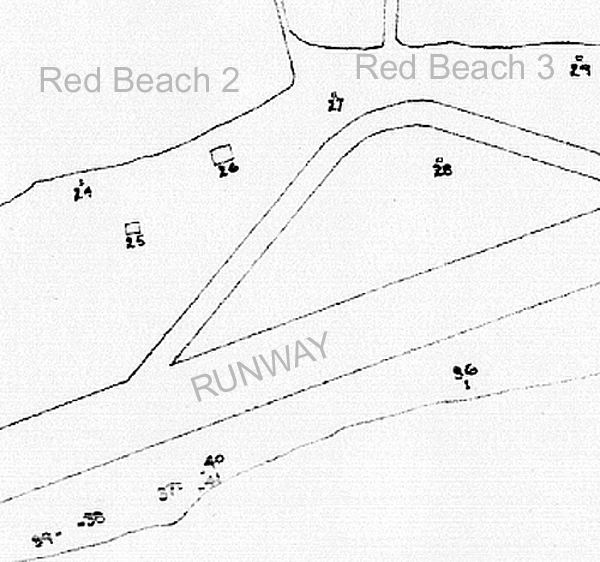
Central section.
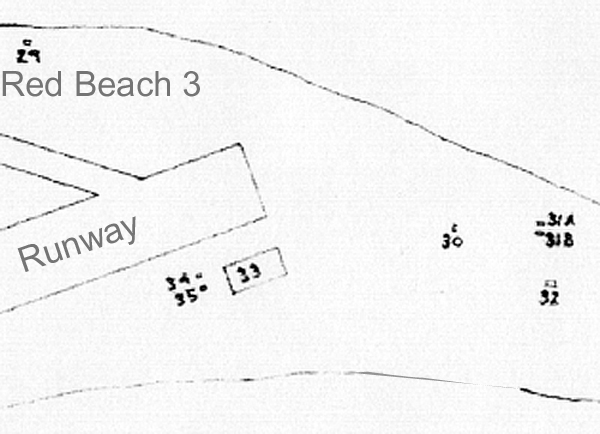
East Secton.
These three pictures of cemetaries were taken by Lester Landry. He was a Motor Machinist's Mate 1st Class on the U.S. Navy subchaser SC1272. They put in on Betio in either January or February 1944. The exact location of these cemetaries on the map is as of yet unknown.
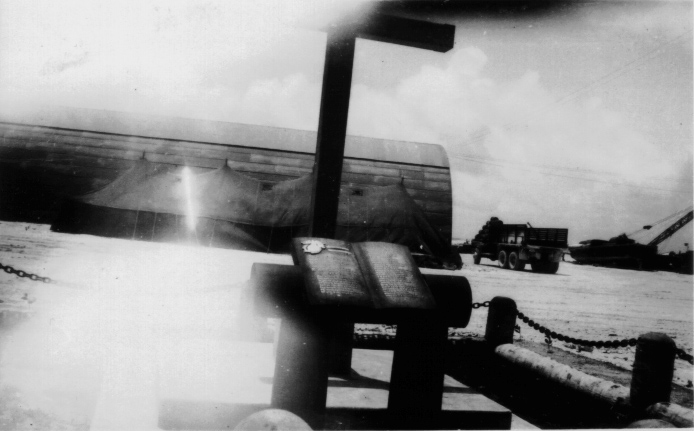
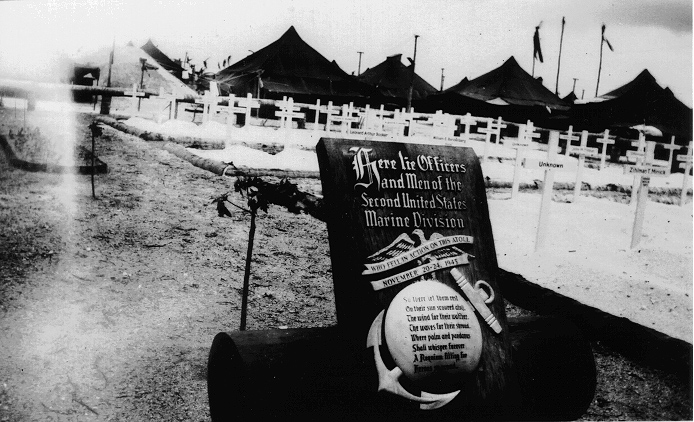
The dedication on the plaque states: "Here lie the Officers and Men of the
Second
United States Marine Division who fell in action on this atoll November
20-24, 1943."
The poem in the globe reads:
So there let them rest
On their sun scoured atoll,
The wind for their watcher,
The waves for their shroud
Where palm and pandanus
Shall whisper forever
A requiem fitting
For heros so proud.
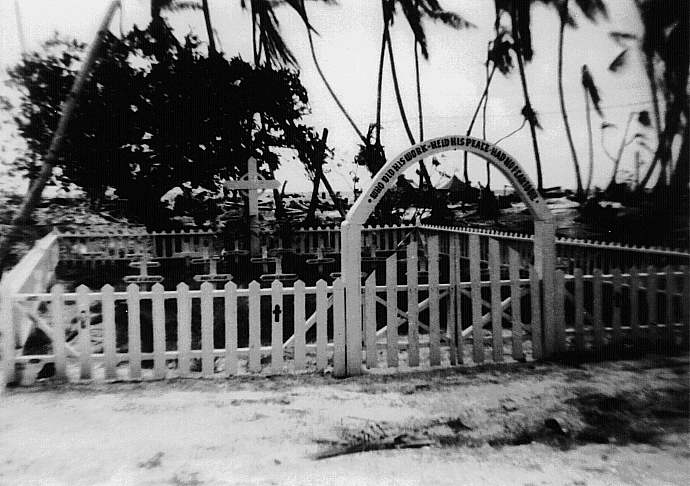
Much work went into this picturesque cemetary. Approximately 15 Marines are buried here.
The sign reads, "Who did his work held his place and had no fear to die."
A WWII Marine that I talked to here was also at Betio not many months after the battle. He told me that because of the size of Betio, it was necessary for the cemetery to be bulldozed and runways laid over it. After I mentioned that Uncle John died there, he was reluctant to give me this information until I told him that Uncle John was buried at sea, so I tend to believe the stories that the permanent cemetery was short lived there. I sure would like to know what happened to the plaques?
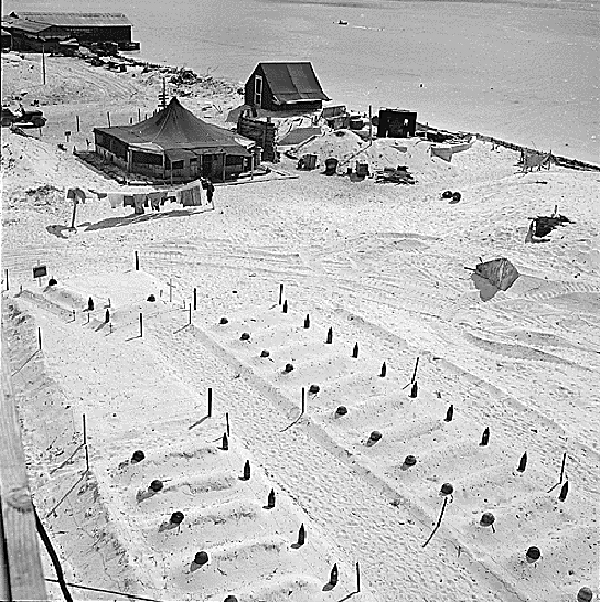
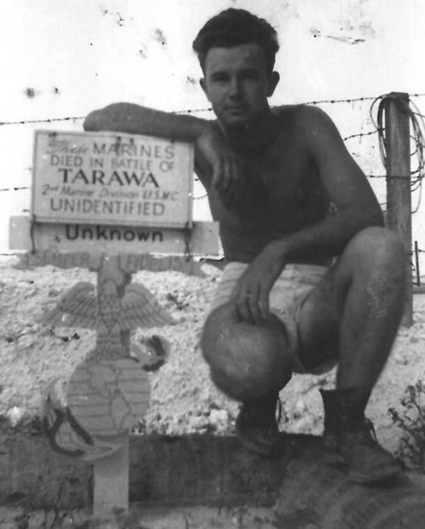
Pat Didlake on Tarawa next to an unknown Marine's grave.
End Notes
1.Don Allen, "The Dead Were Buried at Tarawa - Temporarily", Follow Me, March/April 2001, p.13.
Send an Email:
copyright 2001 T.O.T.W.
Created 3 June 2001 - Updated 15 June 2004

Return to Index
